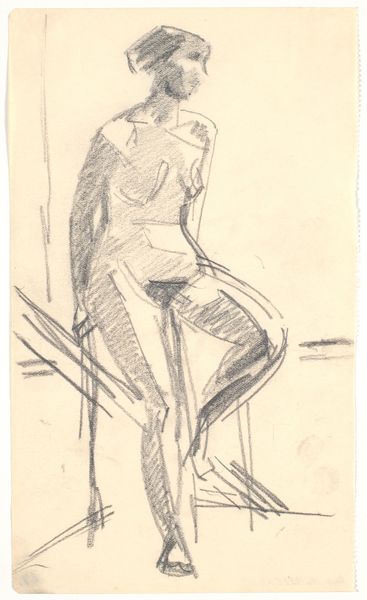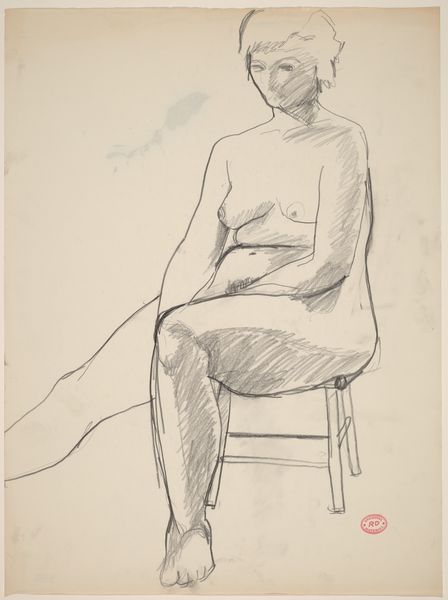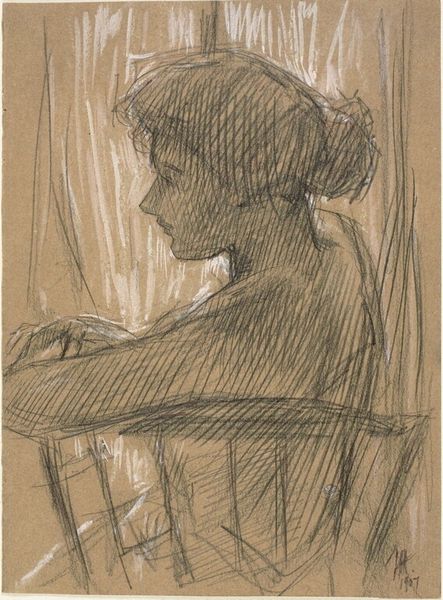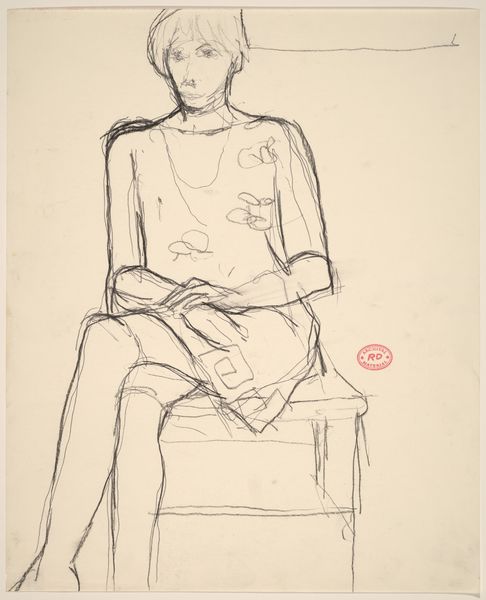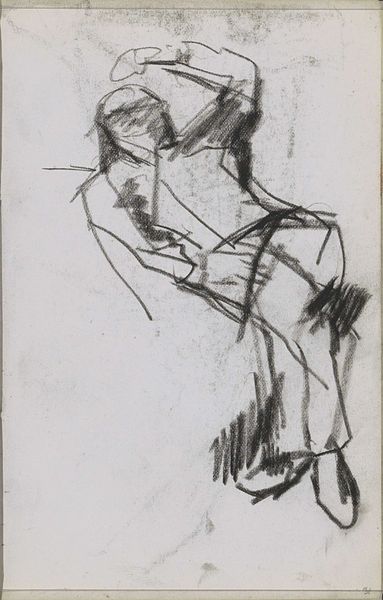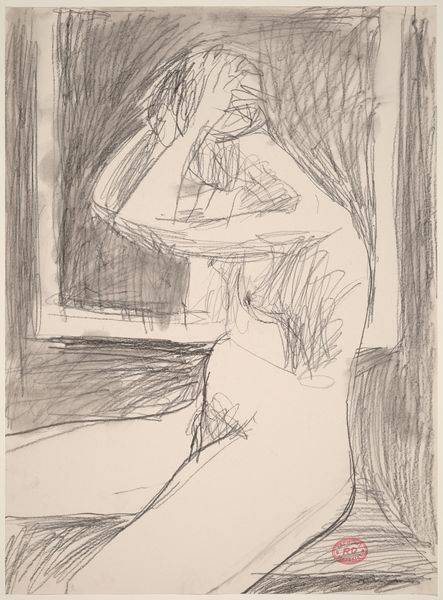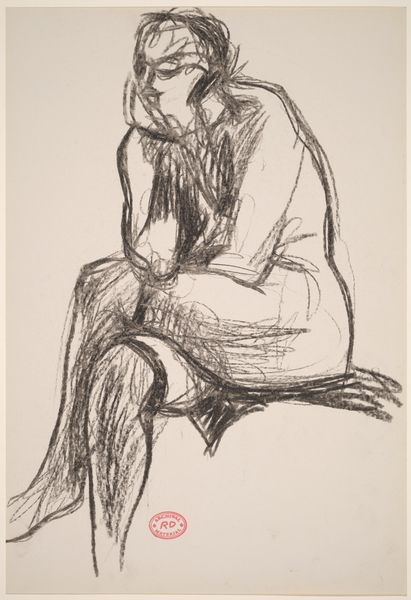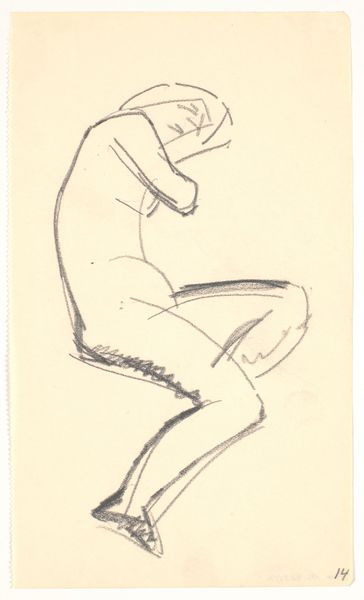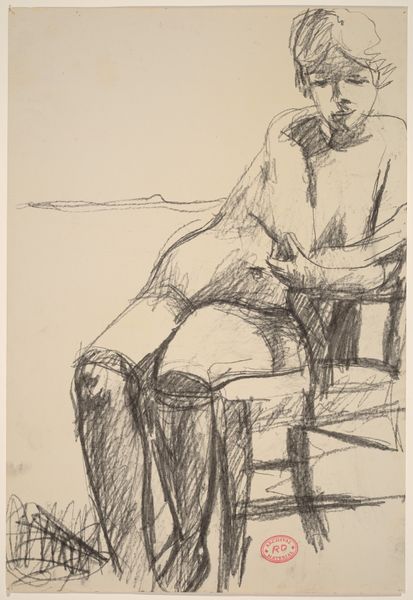
drawing, painting, watercolor, pencil
#
portrait
#
drawing
#
painting
#
pencil sketch
#
figuration
#
watercolor
#
pencil
#
expressionism
#
line
#
nude
#
watercolor
Dimensions: 46 x 61.5 cm
Copyright: Public domain
Curator: Immediately, I’m struck by a feeling of quiet introspection in this piece. The muted tones and the subject's averted gaze… it speaks volumes about the inner world. Editor: That’s interesting. We're looking at Otto Mueller's "Sitzendes Mädchen," or "Seated Girl," created in 1918. Mueller, a key figure in the Expressionist movement, often explored themes of human connection and nature, although here we see a much more intimate and perhaps alienated perspective. It’s currently held at the Abteiberg Museum in Moenchengladbach. Curator: Yes, the Expressionist roots are clear, but the almost sketch-like quality softens the typical angst we associate with the style. Her posture is so closed off, her face obscured… it evokes vulnerability but also a sense of protection. Is this perhaps a response to the turbulent times surrounding the war? Editor: Absolutely. Mueller's work often reflects the socio-political landscape. The First World War ended that year, and his involvement in the conflict significantly impacted him. We see these sentiments echoed within the New Objectivity movement during this time. These themes present themselves in other artistic forms as well, most recognizably in documentary film making of the era. His choice of watercolor and pencil creates a fragility that speaks to the uncertainty and anxiety of that era. Curator: I’m intrigued by the artist's rendering of the figure itself. The lines are simple, almost childlike, and the colors are so restrained, barely suggesting volume or depth. Could this be read as a subversion of traditional, often male-dominated, portrayals of the female nude? The subject seems almost desexualized, made relatable and raw. Editor: I see your point, though the artistic liberties he has taken with his representation of her, and their impact on public perception, are complex. Considering that Mueller was part of Die Brücke, his choice of subject matter and his expressionist visual language already position him outside traditional and academic norms. Furthermore, the formal elements here are far from the overt objectification that pervades artistic depictions of women. What seems progressive can also fall flat in terms of audience appeal and commercial interests. This creates tension between his art and the socio-cultural contexts that support and challenge it. Curator: Food for thought, definitely! This piece encourages a closer inspection and dialogue about art as a marker of complex socio-political issues. Editor: Indeed. “Seated Girl” grants a lens through which to examine both Mueller's personal struggles, as well as how he grapples with wider issues of a world in flux.
Comments
No comments
Be the first to comment and join the conversation on the ultimate creative platform.
